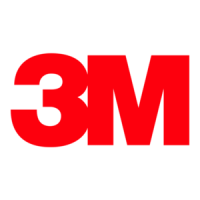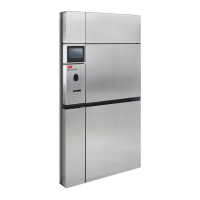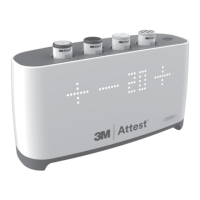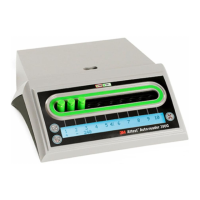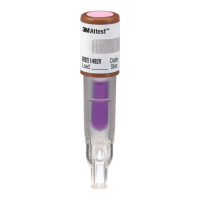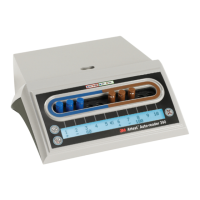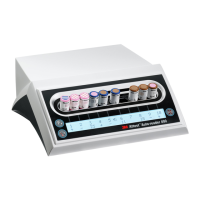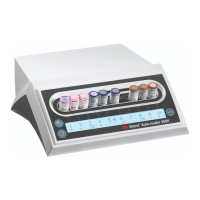6
3M
™
Steri‑Vac
™
Sterilizer / Aerator GSXSeries – Operator’sManual
3.Safety
The 3M™Steri‑Vac™ Sterilizer/Aerator GSX Series was developed with the safety of operators and patients in mind. The GSX Series sterilizers are designed with state‑of‑the‑art safety features
thatinclude:
• Hardware and mechanical components of the GSX Series sterilizers meet or exceed the compliance requirements of current, recognized national and international safety standards including
applicable sections of IEC/EN61010‑1, ANSI/AAMI ST24, andEN1422.
• The sterilization process is performed completely under a vacuum. If the system integrity is compromised during ethylene oxide (EO) gas exposure, room air will enter the chamber. In this
situation, the system will detect a rise in pressure and will safely cancel the cycle when the system cannot maintain a vacuum. Sterilization and aeration can be conducted within the same
chamber. Aeration in the sterilization chamber eliminates the need to transfer product loads outside the sterilization chamber when longer aeration times arerequired.
• EO sterilant is delivered in single‑dose cartridges placed inside the sterilization chamber. The use of single‑dose cartridges reduces the risk of leaking ethylene oxide delivery lines and EO
tank changes and provides increased control of sterilantquality.
• GSX Series sterilizers are designed with an internal processor that automatically controls and independently monitors the physical process parameters to ensure sterilization conditions are
maintained throughout the sterilization cycle. The GSX Series sterilizers’ embedded software regulates, independently monitors, and records critical sterilization process parameters including
pressure, temperature, and percent relative humidity (%RH) duringconditioning.
• Automatic fault notification and safe state recovery processes provide additional protection for the Operator. If the GSX Series sterilizer detects a cycle fault, an error message will alert the
Operator. Additionally, an optional audible notification will accompany the error code message. Immediately after detecting a fault, the GSX Series sterilizer will automatically complete an
error recovery process to bring the sterilizer to a safe‑state prior to furtheraction.
• GSX Series sterilizers are designed with a state‑of‑the‑art proprietary humidification process. In the Conditioning stage of the sterilization cycle, GSX Series sterilizers contain a custom
3M designed humidification process that adds, measures, adapts, and controls %RH to accommodate different loads and packaging materials to achieve proper humidification prior to EO
gasinjection.
• Control and monitor sensors detect critical sterilization process parameters. GSX Series sterilizers have control sensors for temperature, %RH, and pressure that provide information to the
control embedded software. The sterilizer has a duplicate set of monitoring sensors that provide independent data and performance monitoring to an independent monitoring processor
during critical sterilization stages for temperature, %RH, andpressure.
• Over‑the‑door vent hood (i.e. exhaust hood) supplements the room’s directional air flow, and draws air away from Operators removing a load from thechamber.
• The GSX Series sterilizers are designed with a specialized disposal cycle for full damaged, expired, or excess 3M™Steri‑Gas™ EO Gas Cartridges. The Cartridge Dispose Cycle is a
custom, abbreviated cycle that safely empties and aerates the Steri‑Gas EO Gas Cartridges at a rate of one per cycle. Disposal cycles have restricted access to a Supervisor PINonly.
The GSX Series sterilizers and their related devices and accessories are designed to provide safe and reliable service when used according to the provided instructions for use. Please read,
understand, and follow all safety information contained in the instructions for use prior to using a sterilizer. Use this equipment only for the purpose described in this Operator Manual. Retain
these instructions for future reference. If this equipment is used in a manner not specified, the protection provided by the equipment may beimpaired.
It is the user’s facility management’s responsibility to ensure that all personnel who operate or maintain the equipment are trained in its operation and safe use. There are no formal safety
inspections required by the Operator. It is the user’s facility management’s responsibility to assure safety inspections are complete. Contact your local 3M Health Care service personnel or
authorized 3M service personnel for required safetyinspections.
The user‘s facility management has the responsibility to provide Operators and staff with the appropriate mitigations for safety regarding the configuration of the process parameters and the
operation of the 3M™Steri‑Vac™ Sterilizer/Aerator GSX Series. These mitigations include end user validation of custom cycles and the identification, training, and use of appropriate protective
measures (e.g. engineering controls, work practices, or personal protective equipment (PPE)); instruction for use of the equipment, with custom process parameters as defined by the end user,
and comprehensive instruction regarding ethylene oxide (EO), including information on relevant health hazards, national regulations, methods for safe use, and methods to detect escape of
theagent.
DANGER: To reduce the risks associated with exposure to ethylene oxide:
Short term exposure limits (STEL) or long term exposure limits (LTEL) or immediately dangerous to life or health (IDLH) levels could be exceeded during NORMAL use. The user’s facility
management is responsible for providing Operators, staff, and personnel working with 3M™Steri‑Vac™ Sterilizer/Aerator GSX Series equipment comprehensive instructions in the process.
This instruction includes information on relevant health hazards.
It is the user’s facility management’s responsibility to ensure that all personnel working with toxic chemicals, gases, and vapors are given comprehensive instruction in their use. This
instruction includes information on relevant health hazards, national regulations, methods for safe use, and methods to detect the escape of the agent.
It is the user’s facility management’s responsibility to ensure regular training of all personnel involved with the operation and maintenance of the equipment, including emergency procedures
for any toxic, flammable, or explosive material released into the environment and to maintain records of attendance and evidence of demonstrated understanding from training sessions.
National regulation regarding limitations on airborne EO concentration in the workplace exist in the United States. Many countries outside of the US have regulations regarding limitations of EO
concentration the workplace aswell.
User’s facility management shall identify and validate appropriate engineering controls, work practices, personal protective equipment (PPE) and training requirements for Operators and staff
prior to running a custom cycle. Prior to the user’s facility management exposure assessment, EO levels may be at or above IDLH (Immediately Dangerous to Life or Health) limits. User’s facility
management shall provide protective measures in accordance with United States 29CFR 1910.134and 29CFR 1910.1047until validation of facility procedures that meet national, state, and
local requirements for short term exposure limits (STELs) and long term exposure limits(LTELs).
Good practice should include a risk analysis of the EO gas sterilization processes, a written Emergency Response Plan, and an Employee Notification plan for EOleaks.
The following warnings and precautions should be observed to avoid unsafe actions that could result in personal injury or damage to theinstrument.
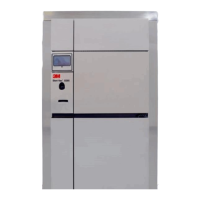
